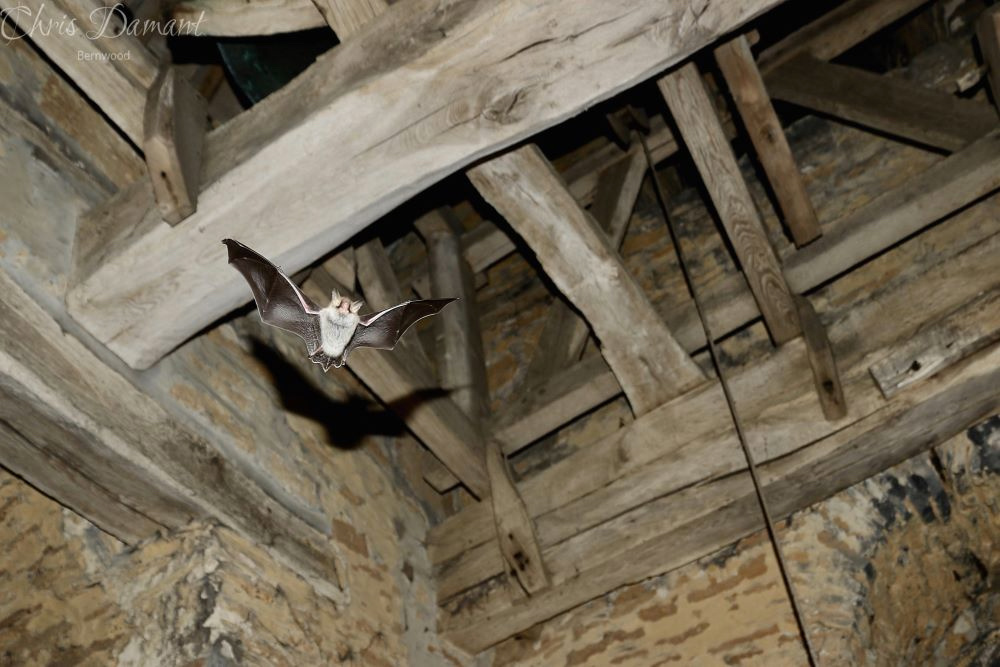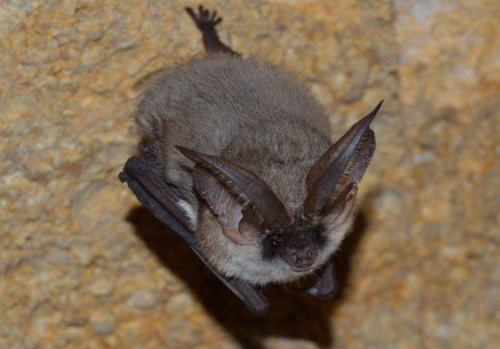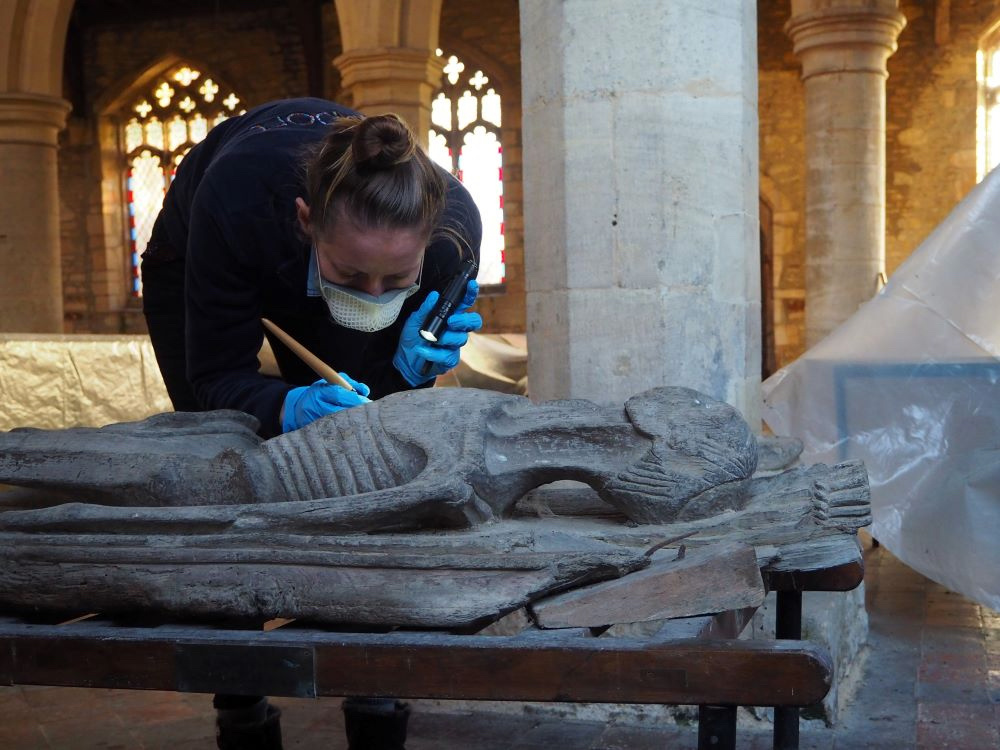Norwich, UK
A pioneering survey on bats in British churches has highlighted a new approach to ways in which humans can successfully share space with wildlife. It has also revealed the importance of churches for bat survival following discovery of a rare species of bat.
Britain’s churches are increasingly home to colonies of bats, roosting high in the rafters and bell towers. Their presence does create problems. Once roosting, they cannot be removed or disturbed. Apart from problems trying to undertake building maintenance, bat droppings and bat urine can cause damage and make life unpleasant for congregations trying to keep surfaces clean.

A Natterer’s bat in St Lawrence Radstone. PICTURE: Chris Damant
In an example of how severe the problem can be, the medieval Church of St Lawrence in Radstone, Northamptonshire, found the cleaning problem so severe due to its nationally important colony of Natterer’s bats that it had to actually cease worship on the site.
Recognising that something had to be done led to a lottery funded, five year ‘Bats in Churches‘ project involving the Church of England, Bat Conservation Trust, Natural England, Historic England and the Churches Conservation Trust. This project set out to find ways in which bats and churches could live together, as well as overseeing the National Bats in Churches Survey, a volunteer survey capturing data about how and why bats are using churches.

Grey long-eared bat. PICTURE: Andrei Sakhno
The results have been impressive. Survey volunteers have just discovered one of the rarest mammals in Britain living in a Somerset church. DNA analysis of droppings confirmed the present of the grey long-eared bat, alongside the more common brown long eared bats. It marks only the second time in five years that the bat has been found during the survey involving over 700 churches nationwide – its previous appearance was in a Devon church.
In order to help churches live alongside the bats, the Bats in Churches project set out to provide a means by which heritage professionals, ecologists, church authorities, congregations and architects could get together to find workable solutions.
Investigating the problems at St Lawrence Church, the decision was made to install a ‘false ceiling’ to separate the bats from the congregation together with alterations to the bell tower. The bats can now roost happily in the ‘attic’ without disturbing the congregation while the new ceiling has lightened and brightened the internal space, and improved the acoustics. The church has now been re-dedicated and services have restarted.
Over in Cambridgeshire, the church of St John the Baptist at Keyston faced equally serious problems. Home to a regionally important maternity roost of more than 100 Natterer’s bats plus common pipistrelle, the church contains a 15th century cadaver tomb that was being damaged by droppings and urine.
Carbon dated to 1400, the tomb is thought to be that of a deceased cleric, probably William Stuckley, who was rector of Keyston between 1401 to 1408. Sculpted as an emaciated body with digestive organs removed, it is extremely rare. Bats in Churches organised a full conservation clean before encasing it in a protective covering to safeguard its future.

Conservator working on the rare wooden tomb cadaver at Keyston. PICTURE: Supplied
Apart from such direct interventions, Bats in Churches have worked with congregations, communities, wildlife groups to create understanding of the bats needs. Some churches have gone on to become eco-churches as a result of the work of the survey.
Cathy Wallace, of Bats in Churches, told Sight the project had created “a lasting legacy by providing permanent, accessible resource information”.
“It has been a pioneering survey, a new approach to human wildlife contexts. We have to share space with wildlife and this survey has shown how this can be achieved. It proves what can be done if you bring together people from heritage conservation, ecology, churches, creating understanding by a presumption that solutions can be found allowing everyone to live together.”






